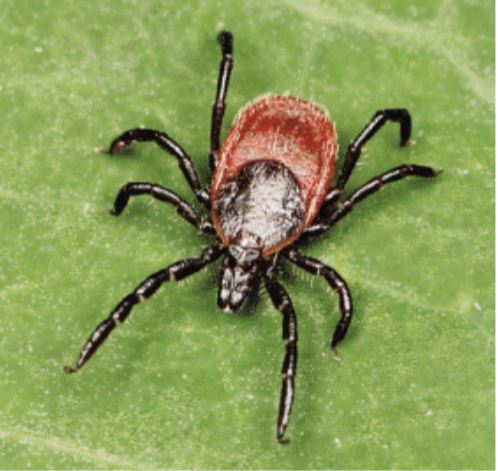
Tidbits
Yes, it’s that time of year again. We have all complained about the winter we had. As I’ve often said, if it wasn’t for the weather, 95 percent of the people we know wouldn’t be able to start a conversation. The fact is, in this part of the world we have a lot of weather to talk about. In winter we might have snowstorms, blizzards, icy roads, and frostbite. But summer is finally here and with it comes a list of things that can actually hurt us. Different kinds of bites. Time for a little tick talk.
Did you know ticks are not insects? They are members of the spider family. They need blood to survive. Any kind of blood. Some ticks love the blood of white-tailed deer. We have around 1,500 of those deer living within our city limits. The more deer, the more ticks. They will also dine on rodents (mice), small animals (your dog), birds and of course, you.
Ticks have curved teeth and they love a nice moist place to sink those teeth into. The usual spots to find one is on your scalp, armpits or groin area. The trick is to get rid of them as soon as you find one. They need to feed for a day or two before they can transmit an infection. They can carry two or three different possible infections at one time. The one infection we hear the most about is Lyme disease.

transmit the virus that causes Lyme disease
through their bites.
Lyme disease is the most common disease spread by ticks all around the Northern Hemisphere. The disease was first diagnosed in 1975 in the town of Lyme Connecticut, hence the name.
People have used a number of ways to remove ticks. Some of them are gasoline, nail polish, petroleum jelly, rubbing alcohol and salt. The thought behind these methods is to ostensibly suffocate the tick. As ticks can survive long periods without air, don’t bother trying any of these. They don’t work.
When you discover a tick don’t panic. Don’t attempt to remove it using your fingers to pull it off. Use a good pair of tweezers. Place the tweezers as close to the skin as possible on both sides of the tick and then gently pull straight up. After the tick has been removed wash the area where the tick was as well as your hands with soap and water.
Symptoms of Lyme disease usually include fever, a headache, fatigue and muscle aches. Another sign is often a circular rash around the infected area which can appear anywhere from three days to a month after the bite. It’s good to be cautious but know the odds of getting Lyme disease after being bitten are less than three percent. Just over 3,000 cases of Lyme disease were reported in 2021 with most cases in Ontario and Quebec. Manitoba isn’t far behind.
Lyme disease appears to be trending upwards so when you plan to go walking or hiking in a wooded area or where ticks are known to be around, take proper precautions. Tuck your jeans into your socks or boots, use insect repellent on both your legs and feet. After your hike, check your body, especially the areas I have already mentioned. Don’t forget to check your clothes as well.
If you develop a rash or fever within several weeks of removing a tick, see your doctor. Tell your healthcare provider about your recent tick, when the bite occurred, and where you likely acquired the tick.
A little tick talk from time to time doesn’t hurt … but a little tick could. Have a safe summer.
Jim was a writer-broadcaster, producer and presenter on television and radio for 40 years. He is also a podcast host on Lifestyles 55 Digital Radio. Find Radio Redux and Mid-Century Memories at www.whatsupwinnipeg.ca


